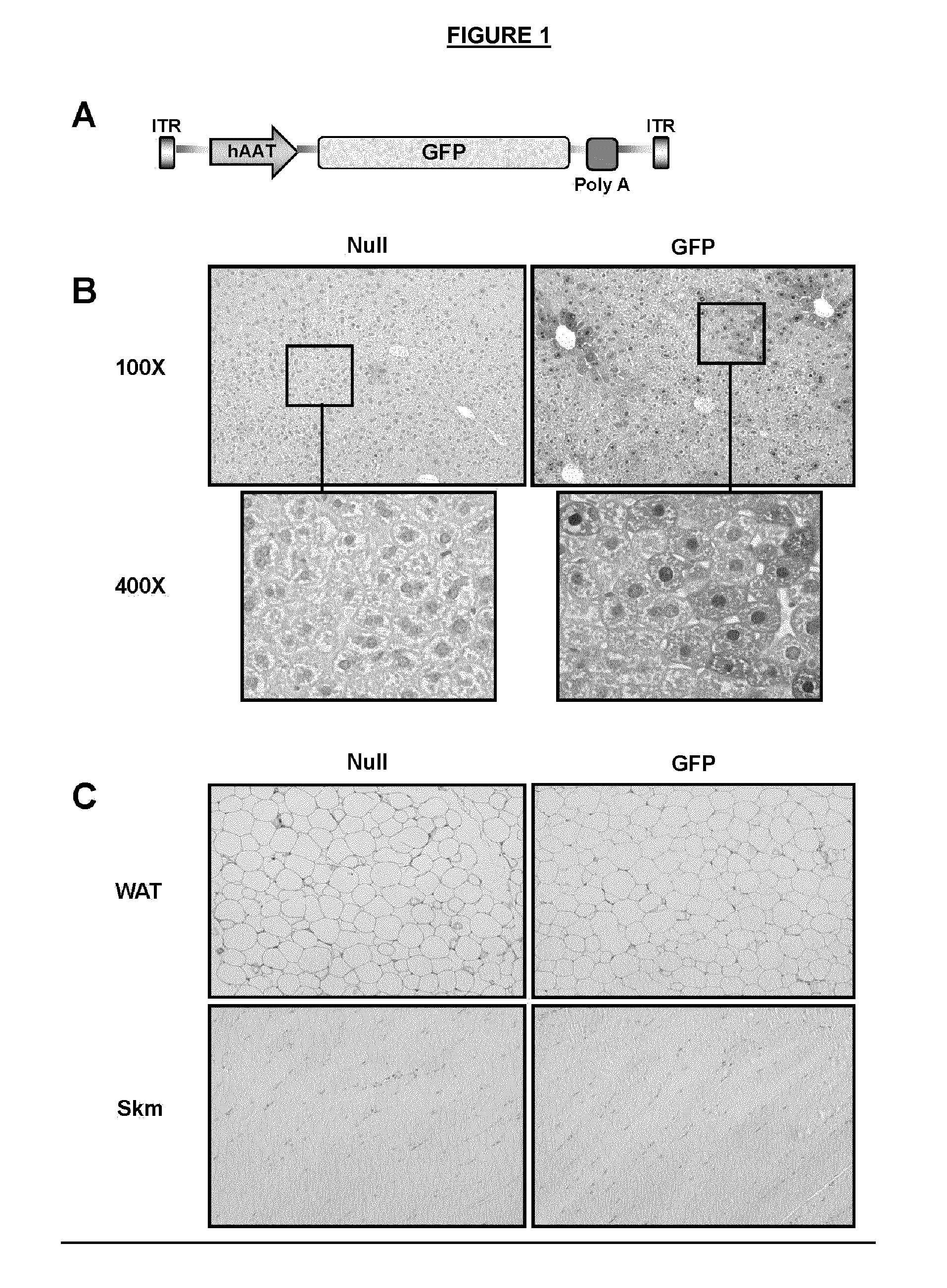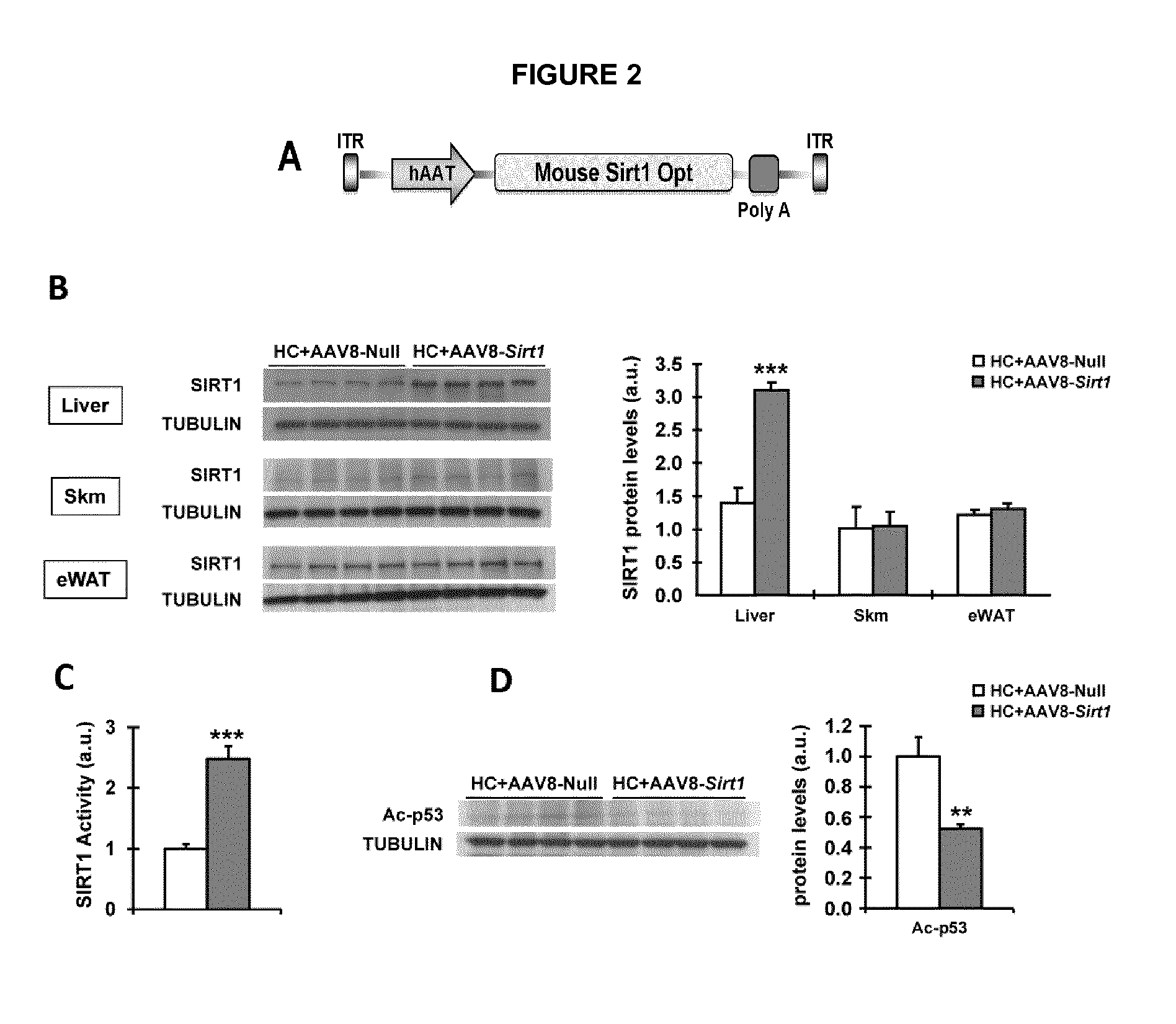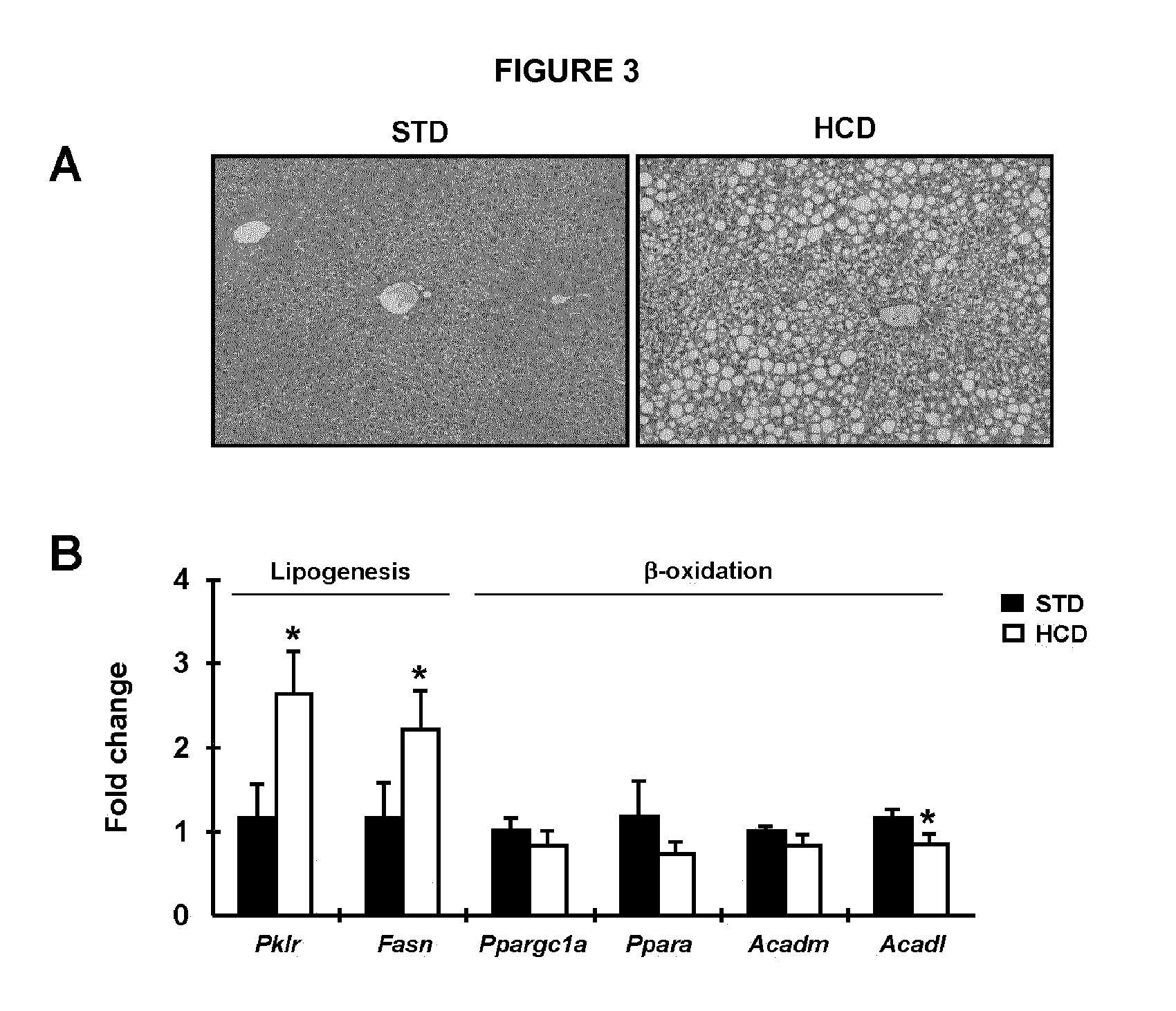Gene therapy compositions for use in the prevention and/or treatment of non-alcoholic fatty liver disease
- Summary
- Abstract
- Description
- Claims
- Application Information
AI Technical Summary
Benefits of technology
Problems solved by technology
Method used
Image
Examples
example 1
Materials and Methods
Animals
[0117]C57B1 / 6 mice were obtained from Harlan laboratories. Mice were kept in a specific pathogen-free facility (SER-CBATEG) and maintained under a light-dark cycle of 12 h. Mice were fed ad libitum with a standard (STD) (2018S Harlan Teklad, Madison, Wis.) or a high carbohydrate diet (CH) (D12450B Research Diets Inc., New Brunswick, N.J.) during 15 weeks. The HC diet contained 70% of calories as carbohydrates and, specifically, 35% comes from sucrose, whereas STD diet contained 60% of calories as carbohydrates but only a 5% comes from sugars. When stated, mice were fasted for 16 h. Animals were anesthetized and killed and tissues of interest were excised and kept at −80° C. or with formalin, until analysis. Animal care and experimental procedures were approved by the Ethics Committee in Animal and Human Experimentation of the Universitat AutOnoma de Barcelona (UAB).
Recombinant AAV8 Vectors.
[0118]Optimized Sirt1 murine plasmid was obtained from GeneArt (Re...
example 2
Liver Specific Sirt1 Overexpression
[0131]To check the tissue-specificity of AAV8 vectors driven by the liver specific hAAT promoter, AAV8-hAAT-GFP and AAV8-hAAT-null vectors were injected intravenously to mice at a dose of 5×1011 (vg / mice) (FIG. 1A). Fifteen days after injection, tissues were excised and analyzed. Immunohistochemical analysis showed GFP positive cells only in the liver of AAV8-hAAT-GFP-injected mice, whereas no positive cells for GFP were detected in epididymal WAT (eWAT) or skeletal muscle, thus corroborating the hepatic specificity of hAAT promoter (FIGS. 1B and 1C). Moreover, the quantification of hepatic GFP positive cells showed a 55% of specific hepatocyte transduction (FIG. 13a).
[0132]Then, AAV8-hAAT-Sirt1 (Sirt1) and AAV8-hAAT-null vectors were injected intravenously to mice at the same dose (FIG. 2A). Fifteen weeks after vector delivery, the quantification of vector genomes showed values between 5.7-8.0 vg / cell in the livers of mice that received AAV8-Sirt1...
example 3
Lower Lipid Accumulation in the Liver of Sirt1 Mice Fed with a HC Diet
[0135]To examine whether an increase in hepatic Sirt1 expression could protect against the development of NAFLD, mice overexpressing Sirt1 specifically in the liver were fed a high carbohydrate (HC) diet during 15 weeks. Histological analysis showed that liver fat deposition was increased in null mice fed a HC diet compared with mice fed a standard diet (FIG. 3A). The injection of AAV8-Null vectors did not affect the degree of accumulation of lipids in the liver of animals fed a HC diet (FIG. 14a). However, this lipid accumulation was highly attenuated in Sirt1 mice (FIG. 4A). Indeed, the liver triglyceride content was decreased (−43%, p<0.05) in Sirt1 mice in comparison with null mice (FIG. 4B), in parallel with a decrease in liver weight (−17%, p<0.05) (FIG. 4C). As it is well described, HC diet induces lipid accumulation in the liver through increased lipogenesis and reduced β-oxidation activities (FIGS. 3A and...
PUM
| Property | Measurement | Unit |
|---|---|---|
| Composition | aaaaa | aaaaa |
| Electrical resistance | aaaaa | aaaaa |
Abstract
Description
Claims
Application Information
 Login to View More
Login to View More - R&D Engineer
- R&D Manager
- IP Professional
- Industry Leading Data Capabilities
- Powerful AI technology
- Patent DNA Extraction
Browse by: Latest US Patents, China's latest patents, Technical Efficacy Thesaurus, Application Domain, Technology Topic, Popular Technical Reports.
© 2024 PatSnap. All rights reserved.Legal|Privacy policy|Modern Slavery Act Transparency Statement|Sitemap|About US| Contact US: help@patsnap.com










